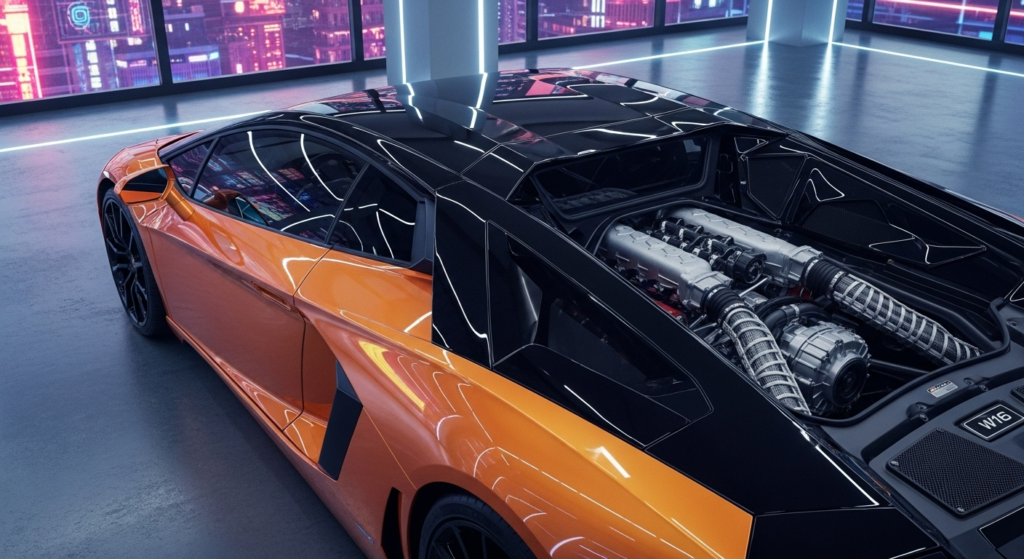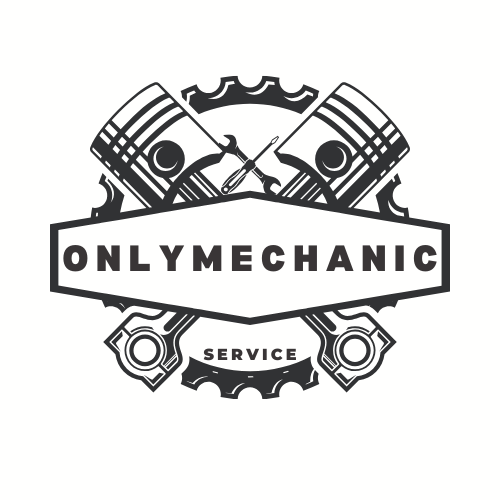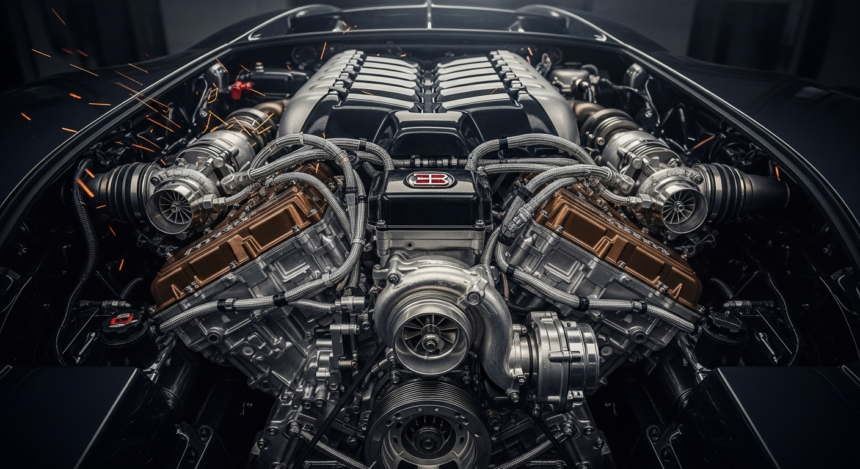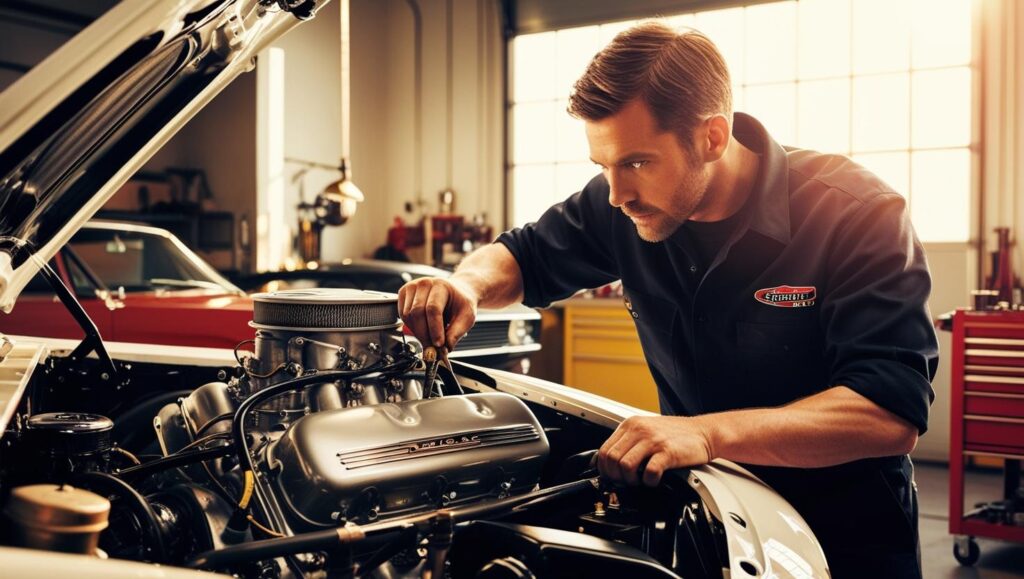Table of Contents
Introduction
The W16 engine represents one of the greatest engineering achievements in modern automotive history. Best known for powering Bugatti’s hypercars, this incredible power unit combines unmatched performance, precision engineering, and mechanical brilliance.
But what exactly is a W16 engine, how does it work, and why is it so legendary?
In this detailed guide, OnlyMechanic.com breaks down everything you need to know about the W16 engine — from its origins to its record-breaking performance.

🔩 1. What Is a W16 Engine?
A W16 engine is a rare and extremely powerful configuration featuring 16 cylinders arranged in four banks of four.
The “W” shape comes from combining two narrow-angle V8 engines side by side, creating a compact yet powerful layout.
🧠 Key Specifications:
- Number of Cylinders: 16
- Layout: Four banks of four cylinders (double-V or “W” shape)
- Turbochargers: Four (quad-turbo setup)
- Displacement: Around 8.0 liters
- Power Output: Up to 1,600 horsepower (in the Bugatti Chiron Super Sport)
This design makes the W16 one of the most complex and powerful internal combustion engines ever built.
🏁 2. The Origin and History of the W16
The W16 concept was developed by Volkswagen Group in the late 1990s as part of an ambitious plan to redefine automotive performance.
Engineers wanted to create an engine capable of breaking the 400 km/h (250 mph) barrier — a feat previously considered impossible for a production car.
📜 Timeline:
- 1999: Volkswagen unveils a W18 prototype concept engine.
- 2005: The Bugatti Veyron 16.4 launches, featuring an 8.0-liter W16 producing 1,001 hp.
- 2016: The Bugatti Chiron pushes the limits further with 1,500 hp.
- 2021: The Chiron Super Sport 300+ surpasses 490 km/h (304 mph), cementing its place in history.
Since then, the W16 has become a symbol of ultimate mechanical excellence and automotive exclusivity.
🔥 3. How the W16 Engine Works
At its core, the W16 is essentially two VR8 engines (derived from Volkswagen’s VR6 design) joined together on a common crankshaft.
⚙️ Key Working Principles:
- Air Intake: Four turbochargers force massive volumes of air into the combustion chambers.
- Combustion: 16 cylinders fire in a highly synchronized pattern for maximum power output.
- Cooling: A sophisticated system of 10+ radiators keeps the massive engine within optimal temperatures.
- Transmission: Power is transferred through a 7-speed dual-clutch gearbox to an all-wheel-drive system.
The result is instant torque, smooth power delivery, and extraordinary high-speed stability — a hallmark of Bugatti engineering.
🚀 4. W16 Engine Performance Figures
Let’s look at what makes the W16 truly mind-blowing.
| Model | Displacement | Power | Torque | Top Speed |
|---|---|---|---|---|
| Bugatti Veyron 16.4 | 8.0L W16 Quad-Turbo | 1,001 hp | 1,250 Nm | 407 km/h |
| Bugatti Chiron | 8.0L W16 Quad-Turbo | 1,500 hp | 1,600 Nm | 420 km/h |
| Chiron Super Sport 300+ | 8.0L W16 Quad-Turbo | 1,577 hp | 1,600 Nm | 490 km/h |
Despite weighing over 2 tons, these hypercars can accelerate from 0–100 km/h in under 2.5 seconds — thanks to the monstrous W16.
🧰 5. Advantages and Drawbacks of the W16
✅ Advantages
- Unmatched power and acceleration
- Unique engine sound and smoothness
- Superior engineering precision
- Excellent stability at extreme speeds
- Symbol of luxury and exclusivity
❌ Drawbacks
- Extremely heavy and complex
- High fuel consumption (30L/100km+)
- Expensive to manufacture and maintain
- Limited to ultra-high-end vehicles
The W16 isn’t about efficiency — it’s about pushing the limits of what’s mechanically possible.
🏎️ 6. Cars Equipped with the W16 Engine
The W16 engine is almost exclusively used by Bugatti, making it one of the rarest powertrains on Earth.
🚘 Models Featuring the W16:
- Bugatti Veyron (2005–2015)
- Bugatti Chiron (2016–2025)
- Bugatti Divo
- Bugatti Centodieci
- Bugatti Bolide (Track-only hypercar)
Each of these vehicles showcases the W16 in different configurations, but all share the same DNA: speed, luxury, and perfection.
🔮 7. The Future of the W16 Engine
Sadly, the W16 era is coming to an end.
Bugatti has confirmed that future models will transition toward hybrid and electric powertrains, marking the end of traditional combustion glory.
The upcoming Bugatti Tourbillon (2026) is rumored to feature a V16 hybrid engine, symbolizing a new chapter while honoring the W16 legacy.
Even so, the W16 will remain a mechanical masterpiece, celebrated by enthusiasts for generations.
❓ Frequently Asked Questions (FAQ)
Q1: Why is it called a W16 engine?
Because the 16 cylinders are arranged in a “W” shape — essentially two V8s joined together.
Q2: Who invented the W16 engine?
The W16 was developed by Volkswagen Group engineers for Bugatti, introduced in the Veyron.
Q3: What is the top speed of a W16-powered car?
The Bugatti Chiron Super Sport 300+ achieved 490 km/h (304 mph), one of the fastest speeds ever recorded.
Q4: Is the W16 engine still in production?
The engine is being phased out after 2025, replaced by hybrid or electric systems.
🏁 Conclusion
The W16 engine stands as a symbol of human engineering excellence — a powerplant that defied conventions and pushed automotive technology to its limits.
From the Veyron to the Chiron, it redefined what was possible in speed, performance, and craftsmanship.
Even as the industry moves toward electrification, the legacy of the W16 will forever remain a benchmark of power and innovation in automotive history.


